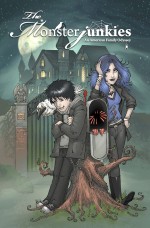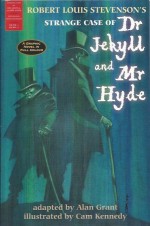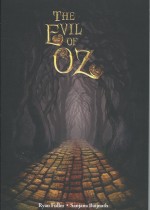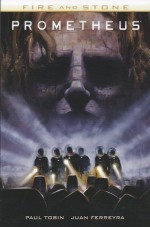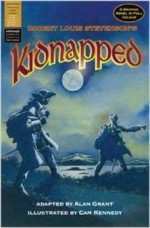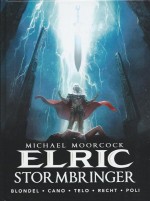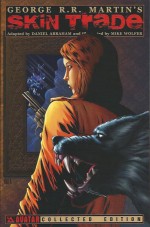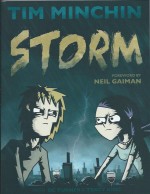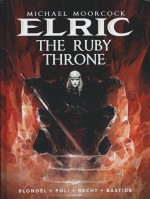
By Jim Lawrence, John McLusky, Yaroslav Horak & Harry North (Titan Books)
ISBN: 987-0-85768-591-9
Win’s Christmas Gift Recommendation: A Most Traditional Licence to Thrill… 9/10
It’s annoying to admit but there are very few British newspaper strips to challenge the influence and impact of classic daily and Sunday “funnies†from America, especially in the field of adventure fiction.
The 1930’s and 1940’s were particularly rich in popular, not to say iconic, creations. You would be hard-pressed to come up with home-grown household names to rival Popeye, Dick Tracy, Buck Rogers or Flash Gordon, let alone Terry and the Pirates, Steve Canyon, or the likes of Little Lulu, Blondie, Li’l Abner, Little Orphan Annie or Popeye and yes, I know I said him twice, but Elzie Segars’s Thimble Theatre was funny as well as thrilling, constantly innovative, and really, really good.
What strips can you recall to equal simple popularity let alone longevity or quality in Britain? Rupert Bear? Absolutely. Giles? Technically, yes. Nipper? Jane? The Perishers? Garth? Judge Dredd?
I’d like to hope so, but I doubt it.
The Empire didn’t quite get it until it wasn’t an empire any more. There were certainly very many wonderful strips being produced: well-written and beautifully drawn, but that stubborn British reserve plus a completely different editorial view of the marketplace (which just didn’t consider strips an infallible, readership-attracting magnet, as our American cousins did) never seemed to be in the business of creating household names… until the 1950’s.
Something happened in ‘fifties Britain – but I’m not going to waste any space here discussing it. It just did.
In a new spirit that seemed to crave excitement and accept the previously disregarded, comics (as well as all “mere†entertainment media from radio serials to paperback novels) got carried along on the wave. Just like television, periodicals such as Eagle, the regenerated Dandy and Beano and girls’ comics in general all shifted into creative high gear …and so at last did newspapers.
And that means that I can happily extol the virtues of a graphic collection with proven crossover appeal for a change.
The first 007 novel Casino Royale was published in 1953 and was subsequently serialised – after much dithering and nervousness on behalf of author Fleming – as a strip in the Daily Express from 1958. It was the start of a beguiling run of paperback book adaptations scripted by Anthony Hern, Henry Gammidge, Peter O’Donnell and Kingsley Amis before Jim Lawrence, a jobbing writer for American features (who had previously scripted the aforementioned Buck Rogers) came aboard on The Man With the Golden Gun to complete the transfer of the Fleming canon to strip format. Thereafter he was invited to create new adventures, which he did until the strip’s demise in 1983.
The art on the feature was always of the highest standard.
Initially John McLusky handled the illustration until 1966’s conclusion of You Only Live Twice and, although perhaps lacking in verve, the workmanlike clarity of his drawing easily coped with the astonishing variety of locales, technical set-ups and sheer immensity of cast members, whilst accomplishing the then-novel conceit of advancing a plot and ending each episode on a cliff-hanging “hook†every day.
He was succeeded by Yaroslav Horak, who debuted on Man With the Golden Gun offering a looser, edgier style, at once more cinematic and with a closer attention to camera angle and frenzied action that seemed to typify the high-octane 1960’s.
Horak illustrated 26 complete adventures until in 1977 The Daily Express ceased running the Bond feature (with the then-running adventure suddenly switching to The Sunday Express (from January 30th until conclusion on May 22nd).
Later adventures had no UK presence at all, only appearing in syndication in European papers. This state of affairs continued until 1981 when British paper The Daily Star revived the feature with ‘Doomcrack’.
Titan books have re-assembled those scarce-seen tales – a heady brew of adventure, sex, intrigue and death – into the last of their addictively accessible monochrome Omnibus Editions, wherein a dedicated band of creators on top form prove how the world’s greatest agent never rests in his mission to keep us all free, safe, shaken, stirred and thoroughly entertained…
The frantic derring-do and dark, deadly diplomacy commences with Lawrence & Horak’s final (UK-embargoed) exploit ‘Shark Bait’ – originally running abroad from 1978 to 1979 – finding Bond up to his neck in hot water after boldly abducting Soviet scuba diver Katya Orlova from the Coral Sea.
That high-bodycount encounter is, however, only the starting point in 007’s mission and, after brutally deprogramming her in the searing Australian Outback, they become moving targets for KGB hit-teams as he builds trust before completing his overall game plan: tracking down a colossal shark which has swallowed a stolen computer carrying NATO nuclear secrets.
With the Russians inexorably closing in on the prize, the infallible agent is prepared to do whatever it takes to stop them…
When The Daily Star began their Bond serial with ‘Doomcrack’ (February 2nd to August 19th 1981) Lawrence was still in command of concocting stories but the illustrator was a rather controversial one.
Harry North was a regular and prolific contributor to both the US and UK iterations of Mad Magazine and, whilst his renditions of the regular cast caught the likenesses of the filmic Bond, M, Moneypenny and others, his action and suspense scenes couldn’t escape his comedic preferences and often hinder or even destroy all dramatic effect.
If you can get past that though, the tale of KGB killers, East German intrigue and defector Dr. Vlad Sinescu is a gripping if convoluted one. The avaricious genius wants to sell to Britain his new super weapon – capable of exploding brains at a distance, bringing down aircraft and shaking down cities – but his communist former masters are prepared to do anything to stop the sale.
…And then, amidst all the carnage and chaos, insidious criminal cabal S.P.E.C.T.R.E. steps in, grabbing the boffin and his weapon before extorting the world by destroying national monuments. With the situation hopeless it’s no wonder 007 quits and joins the opposition…
Veteran artist McLusky returned to steady the ship for the next explosive epic wherein devious cult leader Father Star uses psycho-chemicals, brain surgery, artificial angels and ghostly special effects to control the actions of bereaved billionaires, generals and politicians. The hunt for the brilliant mastermind with plans of ruling this world, if not the next, takes James around the planet and into many a salacious dive before he can finally crush ‘The Paradise Plot’ (August 20th 1981 to June 4th 1982)…
An insidious millionaire murder-maestro with a revolting terror-weapon turns up in ‘Deathmask’ (June 7th 1982 – February 2nd 1983), leaving a trail of hideously deformed corpses in his wake. It takes the combined efforts of Bond and fellow agent Suzie Kew to defeat deranged Ivor Nyborg‘s legion of mechanical monsters, broach the fiend’s astounding undersea lair and prevent a genetically engineered plague devastating humanity…
A policy switch to shorter, less complex stories was instigated with ‘Flittermouse’ (February 9th – May 20th 1983) as vengeful maniac Dr. Cat returned with another diabolically ingenious method of murder before the indomitable super-agent sent him to his final reward, after which ‘Polestar’ (May 23rd – July 15th 1983) saw the end of Britain’s connection to the espionage ace.
The James Bond strip had been a problem for the Star since its resurrection and was abruptly dropped midway through this adventure. The story concluded only in the ever-reliable European syndication market, and thankfully it’s here in its entirety for us all to enjoy.
The short, sharp saga finds 007 in the subzero wilds of Artic Canada discovering a woman frozen to death and exhibited as a macabre scarecrow.
He’s in territory owned by Polestar Petroleum to locate the origin point of rogue missiles which have been launched against Russia and America, but before he can investigate further he is attacked a rabid wolf…
Rescued by native woman Red Doe, James learns the sordid history of Polestar’s megalomaniacal owner Robert Ayr: ruthless tycoon, potential global dictator, serial abuser and killer of Red Doe’s mother.
Soon Bond has infiltrated the company as a fugitive rocket engineer to scupper plans to subject the world to nuclear blackmail whilst the vengeful Cree woman enjoys a long-anticipated meeting with Ayr…
Again working solely for continental readers, Lawrence & McLusky’s final comics collaboration was ‘The Scent of Danger’ (1983), with Bond lured to a yacht off the Italian Riviera and a near-fatal rendezvous with a ravenous shark. The perpetrator is old enemy Madame Spectra who wants the agent out of the way before she uses a (narcotically addictive) high-end fashion perfume to enslave firstly wives and lovers but eventually every politician in Britain. Happily the unkillable hero and ferociously determined journalist Liz Villiers have a plan to stop her…
Despite every effort the strip was clearly nearing its end when Yaroslav Horak returned for the last two adventures beginning with ‘Snake Goddess’ (1983-1984). At the peak of his flamboyant form the illustrator added a superb frisson of tension to the tale of a mystery killer who used serpents to assassinate military men and operatives involved in the deployment of atomic weapons in Europe.
After the snake killer turned his attention to Moneypenny, Bond’s involvement was assured and his subtle investigations led him to Swedish cult rock star Freya. However, the sultry serpentine peace campaigner was only another target for the true culprit: fanatical fan Mr. Vidyala, a billionaire with money to burn and the brilliance to build a huge nuclear sea-serpent submarine.
He planned to provoke World War III and rule the ruins with his unwilling Snake Queen Freya but utterly underestimated the ruthless ingenuity of the British agent he so easily captured…
This astounding dossier of espionage exploits ends in ‘Double Eagle’ (1984): a baroque plot by German agents on both sides of the Berlin Wall planning a spectacular stunt to promote reunification of their sundered country.
Unfortunately the notionally worthy scheme precluded a number of necessary deaths – by robot giant eagles and merciless KGB and Stasi agents – and risked turning the simmering Cold War red hot…
Following a trail of bodies and dodging numerous assassination attempts Bond eventually finds himself in the invidious position of wanting – just this once – to fail…
Fast, furious action, masses of moody menace, sharply clever dialogue and an abundance of exotic locales and ladies make this an invaluable adjunct to the Bond mythos and a collection no fan can do without. After all, nobody has ever done it better…
All strips are © Ian Fleming Publications Ltd/Express Newspapers Ltd 1987. James Bond and 007 are ™Danjaq LLC used under license from Ian Fleming Publications Ltd. All rights reserved.
